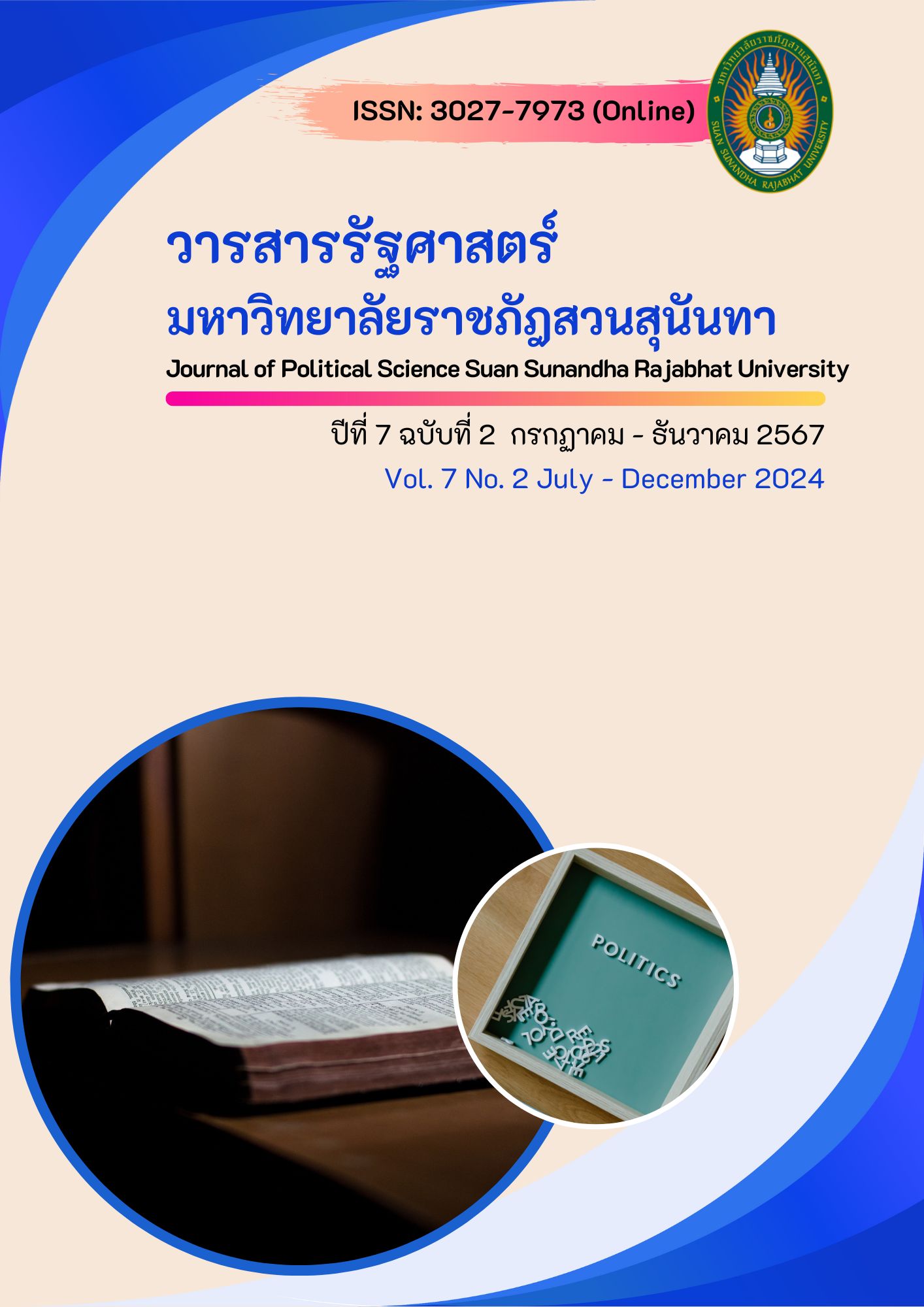บุพปัจจัยและความสำเร็จของธุรกิจอุตสาหกรรมเหล็กในประเทศไทย
Main Article Content
บทคัดย่อ
การวิจัยครั้งนี้มีวัตถุประสงค์เพื่อ 1) ศึกษาระดับระดับของภาวะผู้นำเชิงผู้ประกอบการ นวัตกรรมการจัดการ ความคล่องตัวขององค์กร ศักยภาพเชิงพลวัตร และความสำเร็จของธุรกิจอุตสาหกรรมเหล็กในประเทศไทย 2) ศึกษาอิทธิพลของภาวะผู้นำเชิงผู้ประกอบการ นวัตกรรมการจัดการ ความคล่องตัวขององค์กร ศักยภาพเชิงพลวัตร ที่ส่งผลต่อความสำเร็จของธุรกิจอุตสาหกรรมเหล็กในประเทศไทย 3)สร้างแบบจำลองความสำเร็จของธุรกิจอุตสาหกรรมเหล็กในประเทศไทย งานวิจัยนี้ใช้การวิจัยแบบผสมผสาน การวิจัยเชิงปริมาณ กลุ่มตัวอย่าง คือ ผู้ประกอบการของบริษัทในประเทศไทยที่ดำเนินธุรกิจเกี่ยวกับอุตสาหกรรมเหล็กทุกประเภท จำนวน 400 คน ขนาดของกลุ่มตัวอย่างกำหนดโดยใช้เกณฑ์ 20 เท่าของตัวแปรสังเกต ใช้วิธีการสุ่มกลุ่มตัวอย่างแบบมีสัดส่วน ใช้แบบสอบถามในการเก็บข้อมูล วิเคราะห์ข้อมูลด้วยแบบจำลองสมการโครงสร้าง ส่วนการวิจัยเชิงคุณภาพใช้วิธีการสัมภาษณ์แบบเจาะลึก กลุ่มผู้ให้ข้อมูลหลักคือผู้ประกอบการที่ดำเนินธุรกิจเกี่ยวกับอุตสาหกรรมเหล็กในประเทศไทย รวมจำนวน 15 คน
ผลการวิจัยพบว่า 1) ภาวะผู้นำเชิงผู้ประกอบการ นวัตกรรมการจัดการ ความคล่องตัวขององค์กร ศักยภาพเชิงพลวัตร และความสำเร็จของธุรกิจอุตสาหกรรมเหล็กในประเทศไทย อยู่ในระดับมาก ค่าเฉลี่ยเท่ากับ3.88 2) ภาวะผู้นำเชิงผู้ประกอบการ นวัตกรรมการจัดการ ความคล่องตัวขององค์กร ศักยภาพเชิงพลวัตรที่ส่งผลต่อความสำเร็จของธุรกิจอุตสาหกรรมเหล็กในประเทศไทย อย่างมีนัยสำคัญทางสถิติที่ระดับ .05 และ 3)แบบจำลองความสำเร็จของธุรกิจอุตสาหกรรมเหล็กในประเทศไทย ที่ผู้วิจัยพัฒนาขึ้น มีชื่อว่า LIAD Strategy Model (L : Entrepreneur Leadership Development, I : Organization Innovation, A : Organization Agility, D : Dynamic Potential Organization) นอกจากนี้ผลการวิจัยเชิงคุณภาพยังพบว่า ในการสร้างความสำเร็จของธุรกิจอุตสาหกรรมเหล็กในประเทศไทยนั้น ผู้ประกอบการต้องมีเทคโนโลยีในการผลิตที่ทันสมัย พัฒนาผลิตภัณฑ์เหล็กรูปแบบใหม่ๆ ให้มีมาตรฐานระดับสากล การขายผ่านแพลตฟอร์มการค้าออนไลน์เพื่อเพิ่มขีดความสามารถในการแข่งขันของอุตสาหกรรมเหล็กให้มีศักยภาพสูงขึ้น ผลของงานวิจัยนี้สามารถนำไปปรับใช้เป็นแนวทางกำหนดนโยบายในการดำเนินธุรกิจ เพื่อส่งเสริมความสำเร็จของธุรกิจอุตสาหกรรมเหล็กในประเทศไทย ยั่งยืนต่อไป
Article Details
เอกสารอ้างอิง
ศูนย์วิจัยกรุงศรี. (2566). แนวโน้มธุรกิจ/ อุตสาหกรรมเหล็ก. ค้นเมื่อ 16 ตุลาคม 2567, จาก https://www.krungsri.com/th/research/industry/industry-outlook/construction-construction-materials/steel/io/io-steel-20
กสิกรไทย. (2566). ราคาเหล็กไทยปี’66 คาดย่อลงจากอุปสงค์โลกที่ชะลอ. ค้นเมื่อ 16 ตุลาคม 2567, จาก https://www.kasikornresearch.com/th/analysis/k-econ/business/Pages/Steel-Prices-CIS3417-26-06-2023.aspx
สถาบันเหล็กและเหล็กกล้าแห่งประเทศไทย. (2562). การศึกษาความต้องการใช้งานผลิตภัณฑ์เหล็กในอุตสาหกรรมต่อเนื่องของประเทศไทย. กรุงเทพฯ: โครงการพัฒนาศูนย์ข้อมูลเชิงลึกอุตสาหกรรมเหล็ก และโลหการ ประจำปีงบประมาณ 2562. ค้นเมื่อ 16 ตุลาคม 2567, จาก https://iiu.isit.or.th/th/statistics.aspx
Ade, I. S., Eko, B & Wahyu, W. (2022). Achieving an agile organisation in an Indonesian telecommunications company: investigation on leadership impact and mediation variables. Journal of Science and Technology Policy Management, 15( 1), 6-30.
Bag, S., Gupta, S. and Luo, Z. (2020). Examining the role of logistics 4.0 enabled dynamic capabilities on firm performance. The International Journal of Logistics Management, 31 (3), 607-628.
Correia, R.J., Dias, J.G., Teixeira, M.S. and Campos, S. (2023). Building competitive advantages and business success: the role of learning orientation, reward systems and entrepreneurial orientation. European Business Review, 35 (1), 92-119.
Dorasamy, N. (2021). The search for talent management competence: incorporating digitalization. International Journal of Entrepreneurship, 25 (3),1-21.
Emmanuel, Q., Kaveh, M., Stephanie, S & Yuan, W. (2022). Strategic leadership in SMEs: the mediating role of dynamic capabilities. Leadership & Organization Development Journal, 43(8), 1308-1320.
Giang, H., Huong, N., Tuan, T. L. & Thuy, T. N. (2023). Linking entrepreneurial leadership and innovation performance in hospitality firms: the roles of innovation strategy and knowledge acquisition. Journal of Service Theory and Practice, 33 (4), 511-536.
Harsch, K. and Festing, M. (2020). Dynamic talent management capabilities and organizational agilitya qualitative exploration. Human Resource Management, 59 (1), 43-61.
Herlina, E., Tukiran, M. and Anwar, S. (2021). The effect of entrepreneurial leadership on organizational performance: literature review. Journal of Management Accounting General Finance and International Economic Issues (Marginal), 1(1), 25-33.
Kravariti, F., Tasoulis, K., Scullion, H. and Alali, M.K. (2023). Talent management and performance in the public sector: the role of organisational and line managerial support for development. The International Journal of Human Resource Management, 34 (9), 1782-1807.
Lingling, G., Yue, C., Ying, Q & Ming-Lang, T. (2022). Developing sustainable business model innovation through stakeholder Management and dynamic capability: A longitudinal case study. Journal of Cleaner Production, 372(1), 133626.
Oosthuizen, M. and Scheepers, C. (2018). Strategic foresight for organizational agility at nedbank area collaboration. Emerald Emerging Markets Case Studies, 8(1), 1-43.
Panel, J. B., Carsten, K & Alexander, K. (2023). The interplay between dynamic capabilities dimensions and their relationship to project portfolio agility and success. International Journal of Project Management, 41( 4), 102469
Runping, G., Haobo, Y & Xiao, L. (2023). Coopetition, organizational agility, and innovation performance in digital new ventures. Industrial Marketing Management, 111(3), 143-157.


